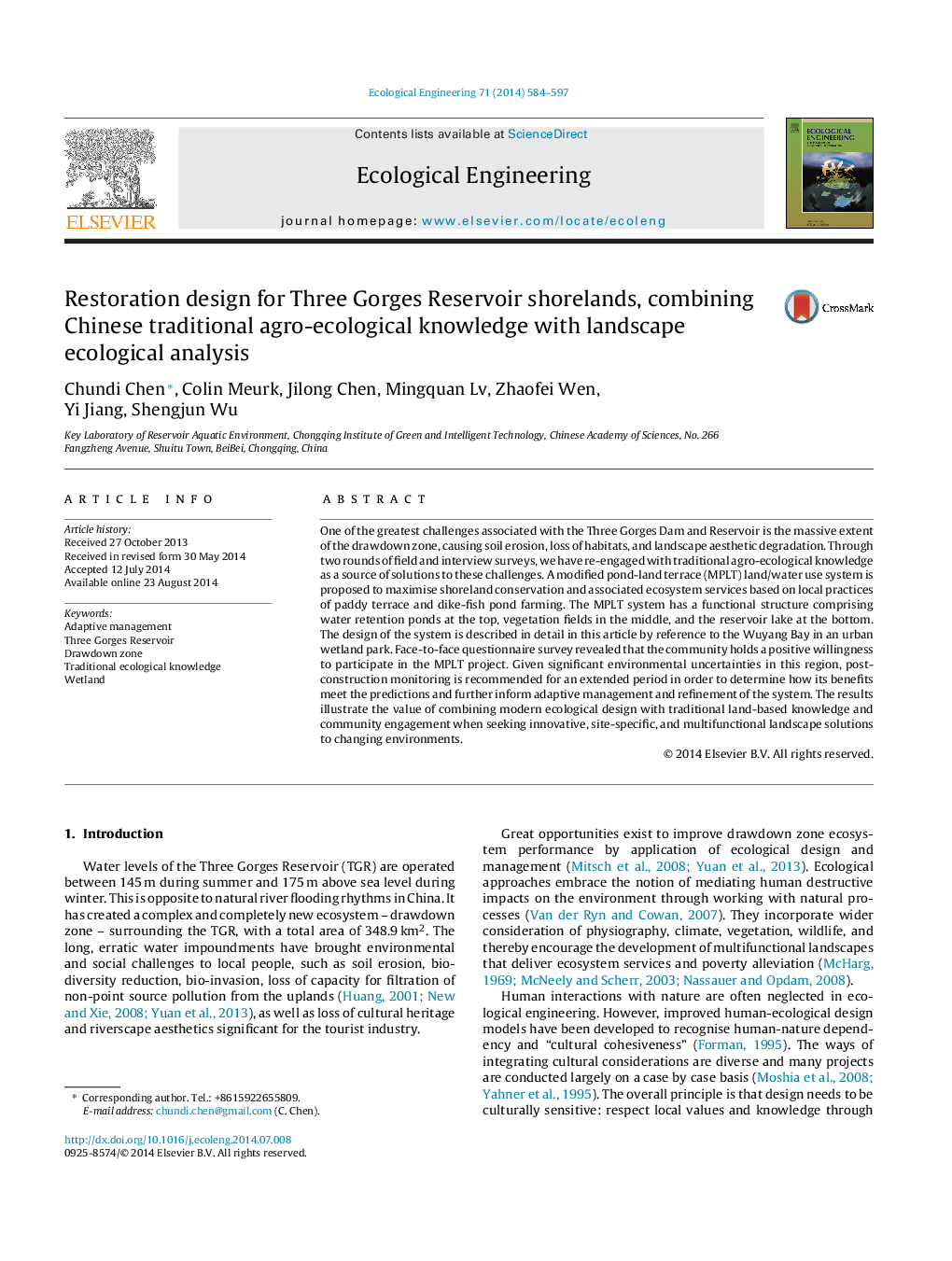| Article ID | Journal | Published Year | Pages | File Type |
|---|---|---|---|---|
| 4389199 | Ecological Engineering | 2014 | 14 Pages |
•We designed a modified pond-land terrace (MPLT) land/water use system to the drawdown zone of the Three Gorges Reservoir.•MPLT system synthesises dike-fish pond and paddy terrace elements from the farming traditions of the local community.•MPLT is a system facilitating and synergises energy and matter interactions between ponds and surrounding land.•The project incorporates community engagement and adaptive landscape management strategies in design, implementation and monitoring processes.
One of the greatest challenges associated with the Three Gorges Dam and Reservoir is the massive extent of the drawdown zone, causing soil erosion, loss of habitats, and landscape aesthetic degradation. Through two rounds of field and interview surveys, we have re-engaged with traditional agro-ecological knowledge as a source of solutions to these challenges. A modified pond-land terrace (MPLT) land/water use system is proposed to maximise shoreland conservation and associated ecosystem services based on local practices of paddy terrace and dike-fish pond farming. The MPLT system has a functional structure comprising water retention ponds at the top, vegetation fields in the middle, and the reservoir lake at the bottom. The design of the system is described in detail in this article by reference to the Wuyang Bay in an urban wetland park. Face-to-face questionnaire survey revealed that the community holds a positive willingness to participate in the MPLT project. Given significant environmental uncertainties in this region, post-construction monitoring is recommended for an extended period in order to determine how its benefits meet the predictions and further inform adaptive management and refinement of the system. The results illustrate the value of combining modern ecological design with traditional land-based knowledge and community engagement when seeking innovative, site-specific, and multifunctional landscape solutions to changing environments.
